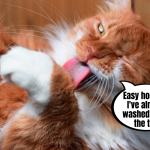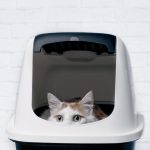Cat is usually breathing quietly, but when it starts making dog-like sounds (or worse – Darth Vader!), know that something might be up. The reasons for breathing with an open mouth may be many – from harmless, such as playing on a hot day, to the more dangerous, related to, for example, respiratory diseases. The most common causes of cat panting we are listing below.
Exhaustion and high temperatures
Cats get tired just like any other creatures, and excessive effort causes rapid breathing, which can even turn into wheezing at times! It could be exhausting play, a frantic pursuit of another cat, or activity in hot weather. If you notice that the cat is panting in this situation, give the cat a rest and watch if the pet’s breathing returns to its normal rhythm. Panting helps your pet to release heat and restore the right body temperature, so in this situation, it’s good for your furry.
Important: If your cat is breathing heavily after playing extensively outdoors on a hot day and the abnormal breathing continues, and if your cat is lethargic or restless, be sure to take him to the vet. These could be symptoms of a dangerous stroke.
Cat pants when it’s scared
Unusual breathing happens to cats also in stressful situations, and there can be many such situations – visiting the vet, bathing, staying with friends while you are away, and even driving a car. If you suspect this type of cause and see that the cat is breathing unusually and everything was fine before then, identify the stress factor and try to eliminate it. If the cat calms down, it’s a sign that you have correctly diagnosed the cause of this ailment in your pet (although it is still worth keeping your eyes peeled, because sometimes certain things can be related).
Respiratory diseases
Gasping breathing in a cat can also be a sign of more serious problems, including respiratory problems. One of the most popular examples of this condition is asthma, which also affects our four-legged friends. This disease has an allergic background and is characterized by narrowing of the airways, as a result of which breathing problems arise. If your fur is starting to “wheeze” and the difficulty of catching a regular breath occurs more frequently than occasionally, this is a signal to go to the vet. Asthma most often occurs in cats between 2 and 8 years of age, but due to its allergic nature, it can occur a quadruped at any age.
Read also:
Apart from asthma, there’s also a risk of cat so-called pleural effusion. This disease is where fluid builds up around the lungs, preventing the organ from expanding properly. Pleural effusion causes breathing problems, but other symptoms that can occur with this condition are a blue pet skin (an effect of hypoxia), lack of appetite and weakness. If you observe at least two of these symptoms in your cat, don’t delay visiting the vet.
Upper respiratory infection
Panting in cats can be the result of a bacterial or viral condition accompanied by symptoms typical of a cold or flu. These types of symptoms may indicate that your cat is currently having an infection. Problems with breathing may also include a lack of appetite, general body weakness and increased temperature. These are other signals that indicate the disease – fortunately, like a human cold – usually temporary, but to identify the correct pathogen, a visit to the veterinary office will be necessary.
As you can see, there can be quite a few reasons for panting in cats and it’s better not to underestimate this, even if it’s temporary. Sometimes seemingly harmless respiratory anomalies can be a symptom of a serious illness, so it’s worth being vigilant and reacting as soon as the situation begins to raise suspicions of something more serious than a momentary anomaly after chasing a toy.
How is it with your cat, fabCat? Does he pant? Or maybe even after running a marathon, is its breathing as calm as the ocean after a storm? Let us know in the comment!




